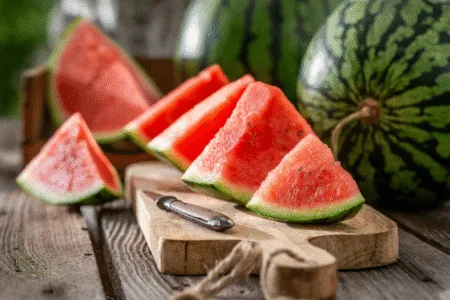
Sky News Arabia
With the advent of summer and rising temperatures, people are increasingly eating watermelon, a refreshing summer fruit known for its high nutritional benefits. However, health experts warn of a common mistake that may turn the joy of eating watermelon into a health risk of food poisoning.
According to a report published by the “Verywell Health” website, cutting watermelon without washing the outer peel can lead to the transfer of dangerous bacteria such as salmonella and E. coli from the surface of the peel to the fruit’s pulp using the knife. When cut watermelon is left for a long time without proper storage, these bacteria multiply inside the pieces, increasing the possibility of food poisoning.
Watermelon rind is exposed to contamination through several stages:
In fields: Dirt, animal droppings, and unclean water may cling to the peel.
During transportation: Watermelons are susceptible to contamination due to mistreatment or unsanitary storage.
In stores and kitchens: Unclean environments cause germs to transfer to fruit.
To avoid risks, experts recommend following simple steps to peel and cut watermelon safely:
Hand washing: Hands should be washed well before and after handling watermelon.
Cleaning the peel: Rinse the watermelon with running water and scrub it using a brush designed for fruits and vegetables.
Drying: Dry the veneer with a clean towel to reduce moisture.
Clean tools: Use a clean and sterilized knife and cutting board.
After cutting the watermelon, experts advise placing the pieces in the refrigerator quickly, in sealed containers or closed plastic bags. The refrigerator temperature must be set at 4 degrees Celsius or less to prevent bacterial growth and preserve the freshness of the fruit.
Watermelon is a rich source of water, fiber, and vitamins such as vitamin C and A, making it a healthy choice to hydrate the body and boost immunity. However, attention to hygiene is essential to avail these benefits without health risks.

















